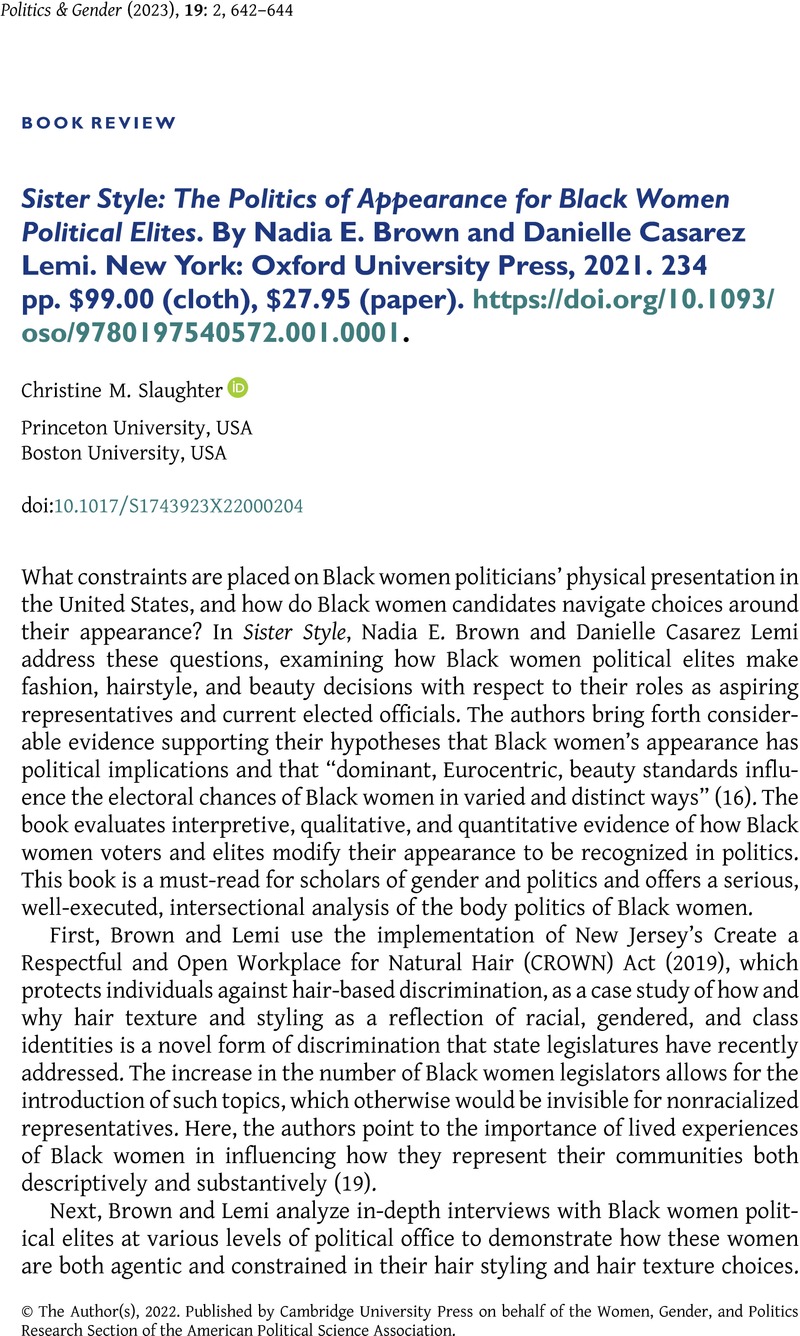No CrossRef data available.
Article contents
Sister Style: The Politics of Appearance for Black Women Political Elites. By Nadia E. Brown and Danielle Casarez Lemi. New York: Oxford University Press, 2021. 234 pp. $99.00 (cloth), $27.95 (paper). https://doi.org/10.1093/oso/9780197540572.001.0001.
Review products
Sister Style: The Politics of Appearance for Black Women Political Elites. By Nadia E. Brown and Danielle Casarez Lemi. New York: Oxford University Press, 2021. 234 pp. $99.00 (cloth), $27.95 (paper). https://doi.org/10.1093/oso/9780197540572.001.0001.
Published online by Cambridge University Press: 19 August 2022
Abstract
An abstract is not available for this content so a preview has been provided. Please use the Get access link above for information on how to access this content.

- Type
- Book Review
- Information
- Copyright
- © The Author(s), 2022. Published by Cambridge University Press on behalf of the Women, Gender, and Politics Research Section of the American Political Science Association


